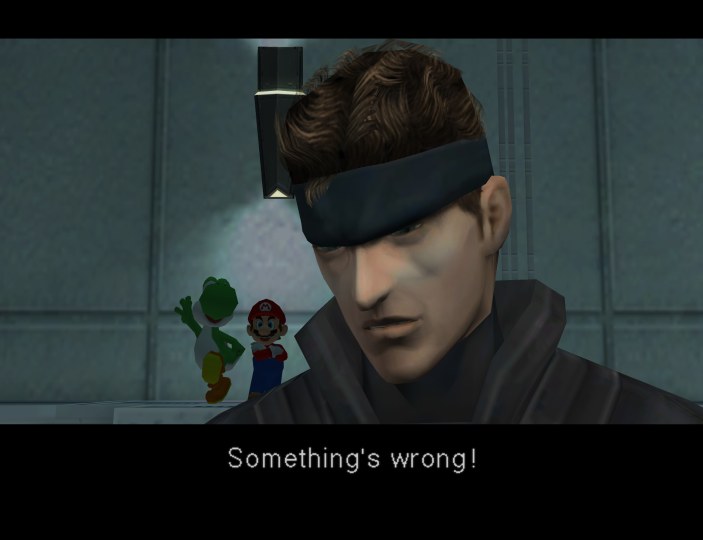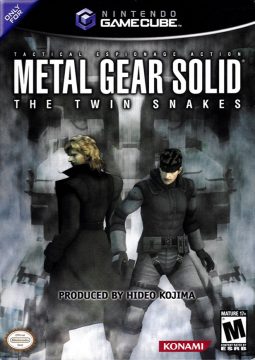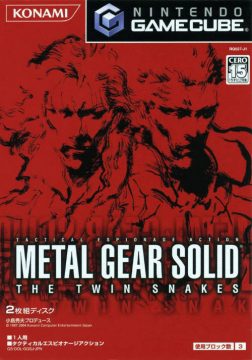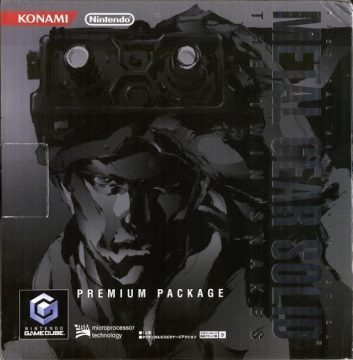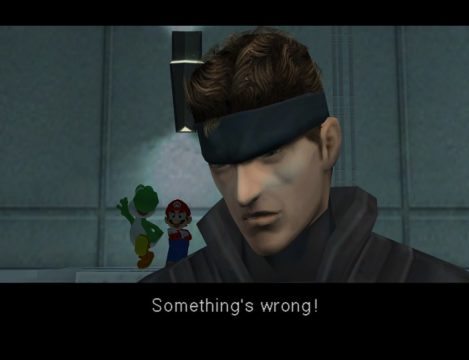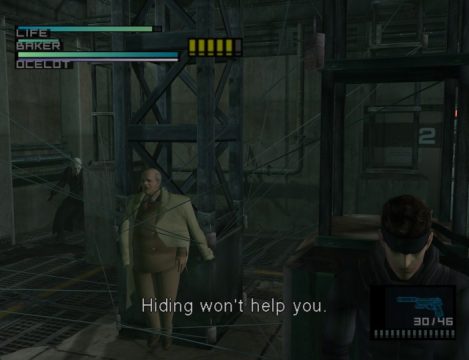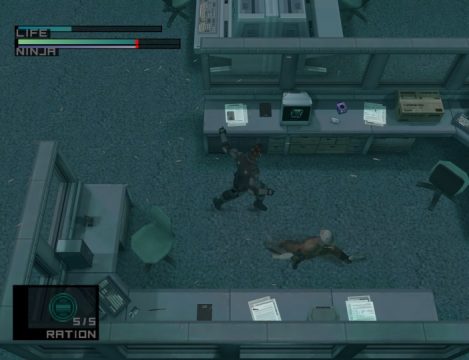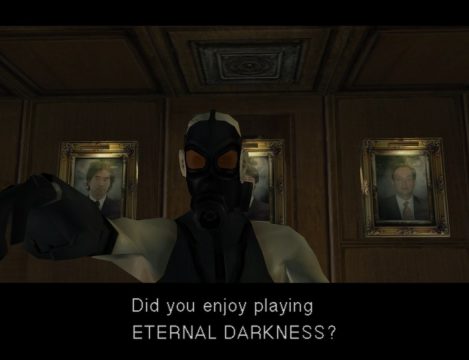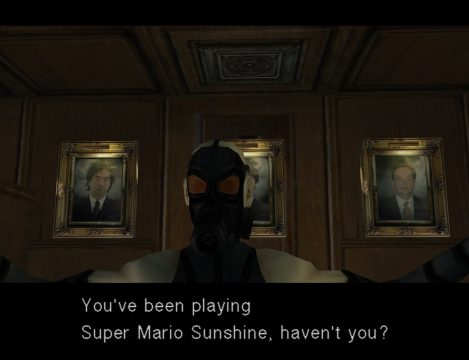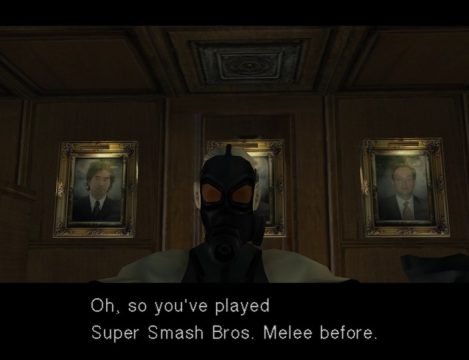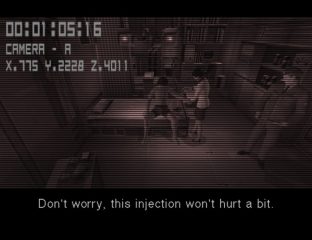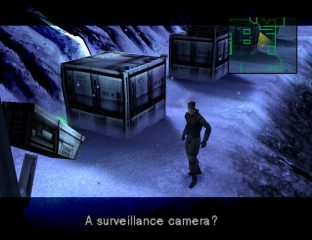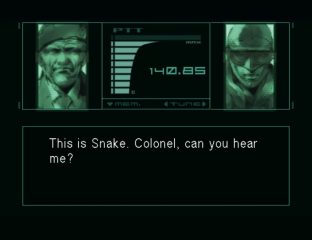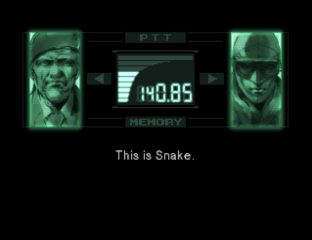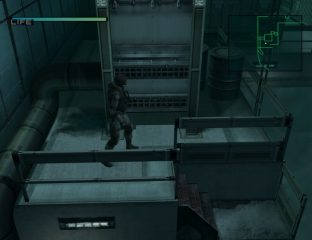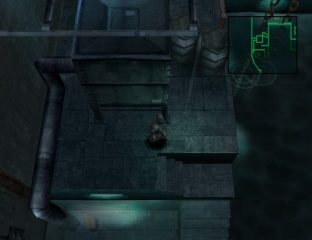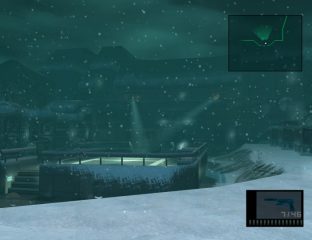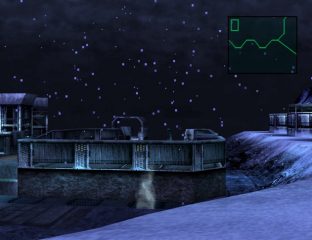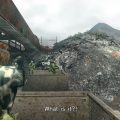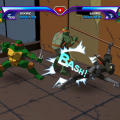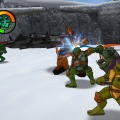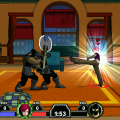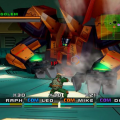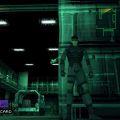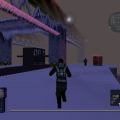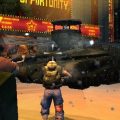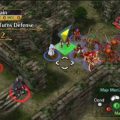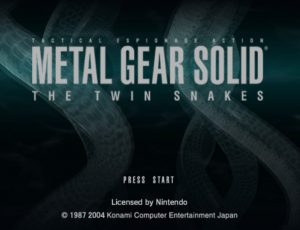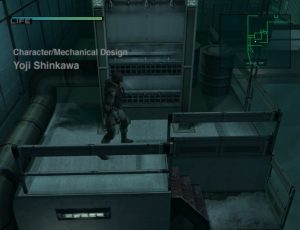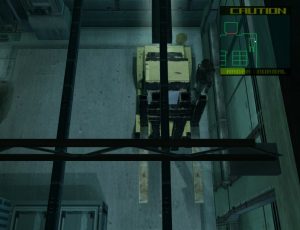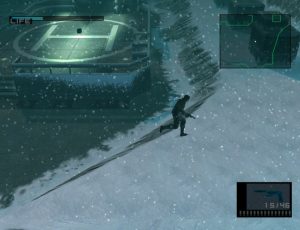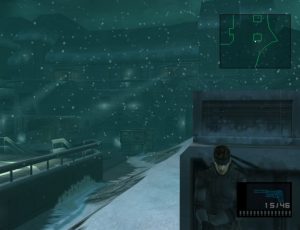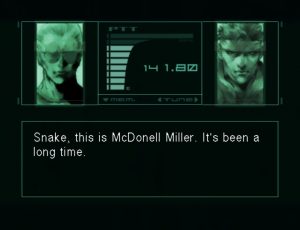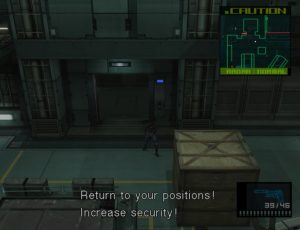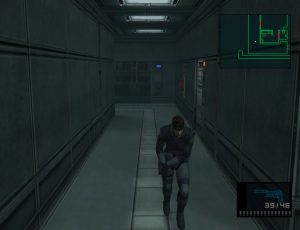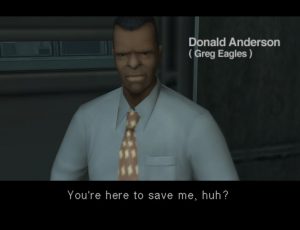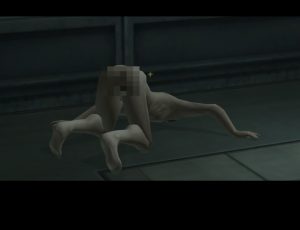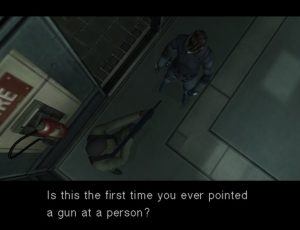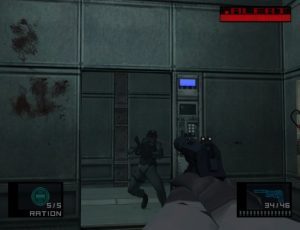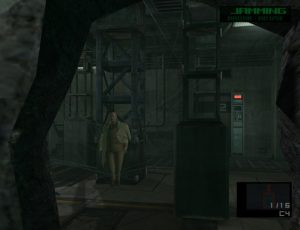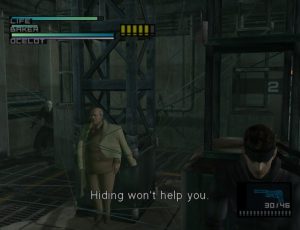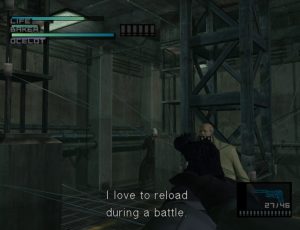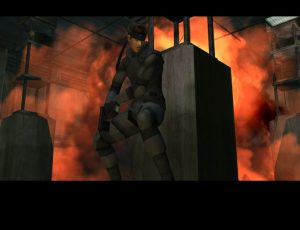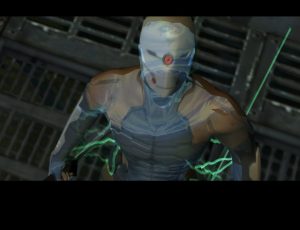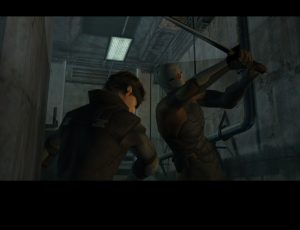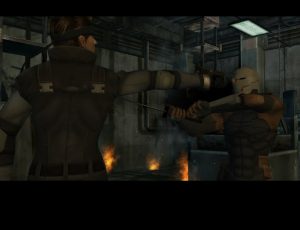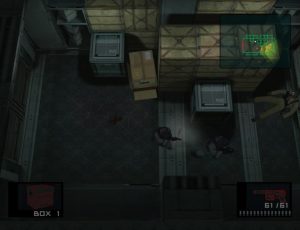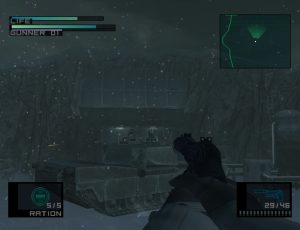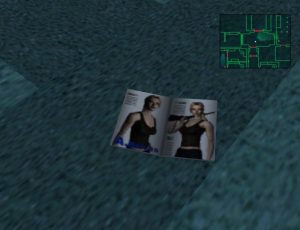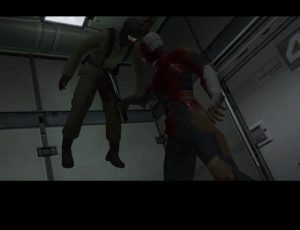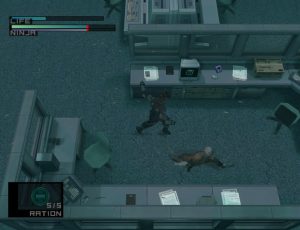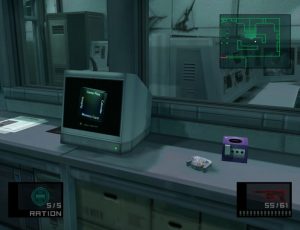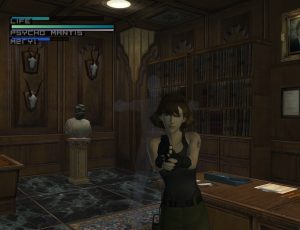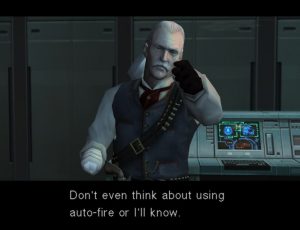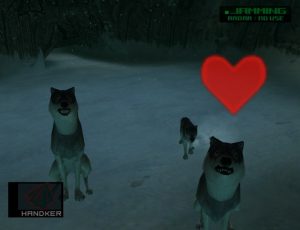- Metal Gear
- Snake’s Revenge
- Metal Gear 2: Solid Snake
- Metal Gear Solid
- Metal Gear Solid Integral Staff Commentary
- Metal Gear Solid (Game Boy Color)
- Metal Gear Solid 2: Sons of Liberty
- Document of Metal Gear Solid 2, The
- Metal Gear Solid: The Twin Snakes
- Metal Gear Solid 3: Snake Eater
- Metal Gear Solid 4: Guns of the Patriots
- Metal Gear Solid: Portable Ops
- Metal Gear Solid: Peace Walker
- Metal Gear Solid V: Ground Zeroes
- Metal Gear Solid V: The Phantom Pain
- Metal Gear Rising: Revengeance
- Metal Gear Touch
- Metal Gear Acid
- Metal Gear Acid 2
- Metal Gear Solid Mobile
Remakes and remasters may feel like all the rage right now but in the early 2000’s, they were just as popular, especially on Nintendo systems. Metroid got its NES game remade for the GBA with Zero Mission and Capcom revamped Resident Evil for the Nintendo Gamecube. Not to be outdone, Konami remade Metal Gear Solid, also for the Gamecube, in 2004. Developer Silicon Knights were brought on to update the game, fresh off their critically acclaimed work on psychological horror game Eternal Darkness. New cutscenes were directed by Ryuhei Kitamura, lending a boisterous flair to the proceedings. Metal Gear Solid: The Twin Snakes is a slick looking remake, and it shows just how much the technological leap there was between two console generations. But this remake also creates tension in the ways in which it adapts the classic game with these new innovations and polish.
The story is essentially the same as the original game; Snake is called out of retirement to stop FOXHOUND and their genetic soldiers from terrorizing the world with the titular mech. Voice acting, however, was redone. According to David Hayter, the original recordings weren’t done in sound-proof rooms and the imperfections were revealed when played back at higher sound quality. While the original cast returns, Gray Fox was recast as Rob Paulsen, instead of Greg Eagles, who remained as DARPA Chief Donald Anderson. In addition, Naomi, Mei Ling, and Natasha lose their English, Chinese, and Ukranian accents in this remake. Metal Gear Solid 4 used these recordings for flashback sequences. Also missing are the VR missions or any of the extras from Integral. Despite these changes and absences, however, The Twin Snakes retains Yoji Shinikawa’s iconic art during Codec sequences. The new recordings are as good as the original, but fans might miss Greg Eagles’ impressive take on Gray Fox, as strong as the new interpretation is. The script was also retranslated, which feels unnecessary considering how strong the original’s was.
The biggest change to the game, the revised cut scenes, are probably the most memorable and controversial part of Twin Snakes. Ryuhei Kitamura is known for stylish action movies. His feature length debut, Versus, was a bombastic, bloody film, set in a forest that can resurrect the dead, involving zombies, yakuza, and swordplay. So the director re-envisioned the events of the game in some wild ways. Characters shows a disdain for physics, constantly flipping and jumping around for seemingly no reason, and bullet time is liberally applied. It is all very over-the-top, even for a Metal Gear game. On PS1, Snake is a larger-than-life badass who can take on a helicopter in a blizzard, but here, he’s characterized as a martial arts fiend able to hop off of missiles while firing a rocket. Funnily enough, Kitamura initially tried to hew close to the original direction, only to have Kojima ask for something that reflected the action director’s own sensibilities instead.
Upgrading the original’s cinematics wasn’t the only change in The Twin Snakes. The mechanics are polished up to the same level as Metal Gear Solid 2. Enemy AI is enhanced, with soldiers coordinating and breaking out riot shields during caution & alert phases. Snake can shoot out radios and hold up his enemies. These upgraded mechanics help make the experience feel more modern, but they also feel superfluous, since the game isn’t substantially altered to take advantage of the new actions. Lockers are scattered around Shadow Moses Island, but it’s not like there’s compelling reason to hide bodies, given that the setting is broken up into smaller rooms than its sequel. Hanging and climbing were added as well, but outside of finding a couple of shortcuts to speed up some of the late-game backtracking, it could have just as well not been added. The new mechanics actually break the game in places. Ocelot’s boss fight is a cakewalk, with first person aiming defeating the already contrived purpose of the room it takes place in.
Twin Snakes is a substantial technical upgrade to the original, thanks to the power of the Gamecube. Shadow Moses Island is polished with all the niceties and performance of its sequel and character models were fleshed out as well, with new motion capture. The game also tries to keep 60 FPS, as with Metal Gear Solid 2, but drops frames regularly, often leading to a choppy experience. Due to Nintendo’s involvement, nods to the company were placed throughout the game. Otacon has Mario and Yoshi figures around his office, as well as a Gamecube console. Psycho Mantis has comments about Super Mario Sunshine, Super Smash Brothers Melee, and other saves on your memory card, and the trick to beat him requires using all 4 controller ports of the Gamecube & a Wavebird controller. Alex Roivas from Eternal Darkness shows up on the magazine distraction item. Music was largely handled by Konami staff, with Norihiko Hibino returning to work on the series once more again. Some tracks, however, were done by Silicon Knights’ composer, Steve Henifin. Some of the sound samples used, like in ‘Mantis Hymn,’ evoke his work on Eternal Darkness. Many areas now have their own distinct variations depending on whether you’re sneaking around, hiding, or fighting, leading to a much larger and diverse soundtrack than the original. However, it’s all quite similar in style to both the original MGS as well as MGS2. The ending theme, ‘The Best Is Yet To Come’, remains in the game.
After missing a fall 2003 release date, Twin Snakes came out in March 2004, first in North America, followed by Japan and Europe later in the month. Like the original game, it came packaged on two discs, with the disc switching happening earlier than in the PS1 game. The game got a premium package in Japan. It included a special platinum-colored Gamecube adorned with a FOXHOUND emblem, a book of behind-the-scenes production notes, and an extra disc with the Famicom version of Metal Gear on it, an interesting choice, given that it was a controversial remake of the MSX2 original.
Metal Gear Solid: The Twin Snakes is a curious game. Nothing that was added to the game really added anything substantial to it. It looks more fetching than the original, it’s a blast to play, and the cinematics are good stylish fun, but these new additions feels tacked on to the original, instead of organically woven in. It can perhaps be best understood through one small, emblematic moment late in the story. Snake overhears two characters talking in a control room, and the door is wide open. In the original release, the protagonist approaches, looks in, and then shuffles to the other side to listen in. In The Twin Snakes, however, he does a flip over the open doorway that would make a gymnast jealous, landing somehow unnoticed on the other side. This remake pours so much effort into differentiating itself from the original, only to end up back in the exact same place.
